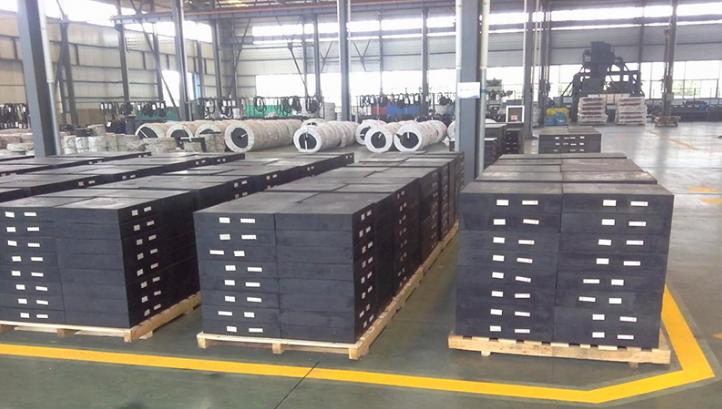The expected service life of elastomeric reinforced bearings can vary based on several factors, including the quality of materials, design, installation, operating conditions, and maintenance. Elastomeric bearings, also known as rubber bearings or rubber bridge bearings, are essential components in infrastructure projects such as bridges, buildings, and other structures. They are designed to accommodate movements and loads, providing flexibility and support while allowing controlled displacements.
While it is challenging to provide an exact service life for elastomeric bearings, as it depends on the specific application and usage, manufacturers often estimate their service life based on testing, engineering analysis, and historical performance data. Let's explore the factors that influence the expected service life of elastomeric reinforced bearings:
The quality of materials used in the manufacturing of elastomeric reinforced bearings plays a significant role in their service life. High-quality elastomers, such as neoprene or natural rubber, are commonly used due to their durability and resistance to weathering, chemicals, and fatigue. It is essential to choose bearings made from reputable manufacturers that use quality materials to ensure longevity.
The operating environment can significantly impact the service life of elastomeric reinforced bearings. Factors such as temperature fluctuations, UV exposure, moisture, chemical exposure, and ozone levels can affect the performance and deterioration of the elastomeric material over time. Extreme temperatures and harsh environments can accelerate aging and degradation, potentially reducing the service life of the bearings.

The loading characteristics on the elastomeric bearing pads, including the magnitude, frequency, and duration of loads, can affect their service life. Higher loads and repetitive loading can cause accelerated fatigue and stress on the elastomeric material. It is crucial to consider the anticipated loading conditions and select elastomeric bearings that can withstand the expected loads for an extended period.
Regular maintenance and inspection can contribute to extending the service life of elastomeric reinforced bearings. Routine inspections can help identify any signs of wear, damage, or deterioration early on, allowing for timely repairs or replacements. Proper cleaning, lubrication (if applicable), and adherence to recommended maintenance procedures can help preserve the integrity and performance of the bearings.
The expected service life of elastomeric reinforced bearings can vary among manufacturers and specific product lines. Reputable manufacturers often provide guidelines or specifications indicating the anticipated service life of their bearings based on laboratory testing or field experience. It is advisable to consult the manufacturer's documentation or technical data to understand their recommended service life for the specific product being considered.
External influences, such as seismic events, vibrations, or impact loads, can affect the service life of elastomeric reinforced bearings. Structures subjected to frequent or intense dynamic forces may experience accelerated wear or fatigue on the bearings. It is crucial to consider the anticipated external influences and select bearings that are designed to withstand the expected conditions.
It is important to note that the expected service life of elastomeric reinforced bearings can vary significantly depending on the factors mentioned above. In general, elastomeric bearings are designed to have a service life ranging from 10 to 30 years or more. However, specific applications and environmental conditions can result in deviations from this range.
Regular inspections, maintenance, and timely replacements are essential for ensuring the continued performance and safety of elastomeric bearings. When signs of wear, deterioration, or loss of functionality are observed, consulting with structural engineers or manufacturers is recommended to assess the need for bearing replacement or repair.
Ultimately, the actual service life of elastomeric reinforced bearings can vary based on the unique characteristics of each project. Consulting with experienced professionals and considering the specific project requirements, loading conditions, and environmental factors can help determine a more accurate estimate of the expected service life for elastomeric reinforced bearings.
If you want to know more information about elastomeric reinforced bearings, please contact us. We will provide professional answers.